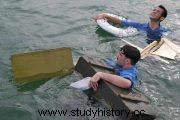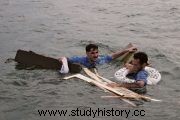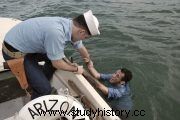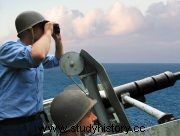
A little over a month ago we talked here about The heifer , the film in which the tandem formed by Luis García Berlanga and Rafael Azcona offered us their particular look at the Civil War and the way in which the historical re-enactment, projected through cinema on those same stages, gave us the opportunity to put in value the intangible heritage of an entire people (Sos del Rey Católico), which has made it its own in a way that fiction has overlapped with historical memory itself, even threatening to replace it. John Ford put in the words of the editor of the Shinbone Star newspaper in The Man Who Shot Liberty Valance (The man who shot Liberty Valance , 1962) that phrase that extolled the appeal of the legend to the detriment of history –»Print the legend!» [Print the legend!]–, relegating reality to oblivion, since everything was subordinated to the construction of the community. Both Berlanga and Ford, although each one with different arguments –the Valencian director using humor and the grotesque, while the Irishman from Maine, without ever giving up humor, offered us a canvas in which the landscape merged with the epic – had the ultimate aim of making a portrait of the history of their respective countries, even though they denied it a thousand times, popularizing this knowledge in a way that, hand in hand with the seventh art, would have no parallel and that has already created, through the images, its own iconography with which the viewer identifies historical events.
The publication of a monograph dedicated to the Japanese attack on the naval airbase at Pearl Harbor on December 7, 1941 –of which this month marks a figure as round as the 80th Anniversary– in the latest issue of Desperta Ferro Contemporánea inevitably refers us to a collective ideology that North American cinema made visible on several occasions in attention to the relevance that those events had in the decision of the American giant to join the Second World War, with its lights and shadows that are described in great detail in the pages of this magazine by renowned historians. In the last two years we have made three sets related to Pearl Harbor at the Sancho de Beurko Association. If in Sos del Rey Católico we recreate a fiction imitating the most significant scenes to pay homage to Berlanga on the centenary of his birth – let's not forget that the story that led to the cinema never happened, did it? –, on this occasion we have been inspired freely in the cinema to propose a journey through the memory of what really happened, although we must not forget that, as Jorge Gorostiza says, the scenery does not generally copy reality, but rather creates a new space (1). This proposal did not come from nowhere, since our Fighting Basques project dealt with the issue of Pearl Harbor in some articles dedicated to the Pacific campaign.
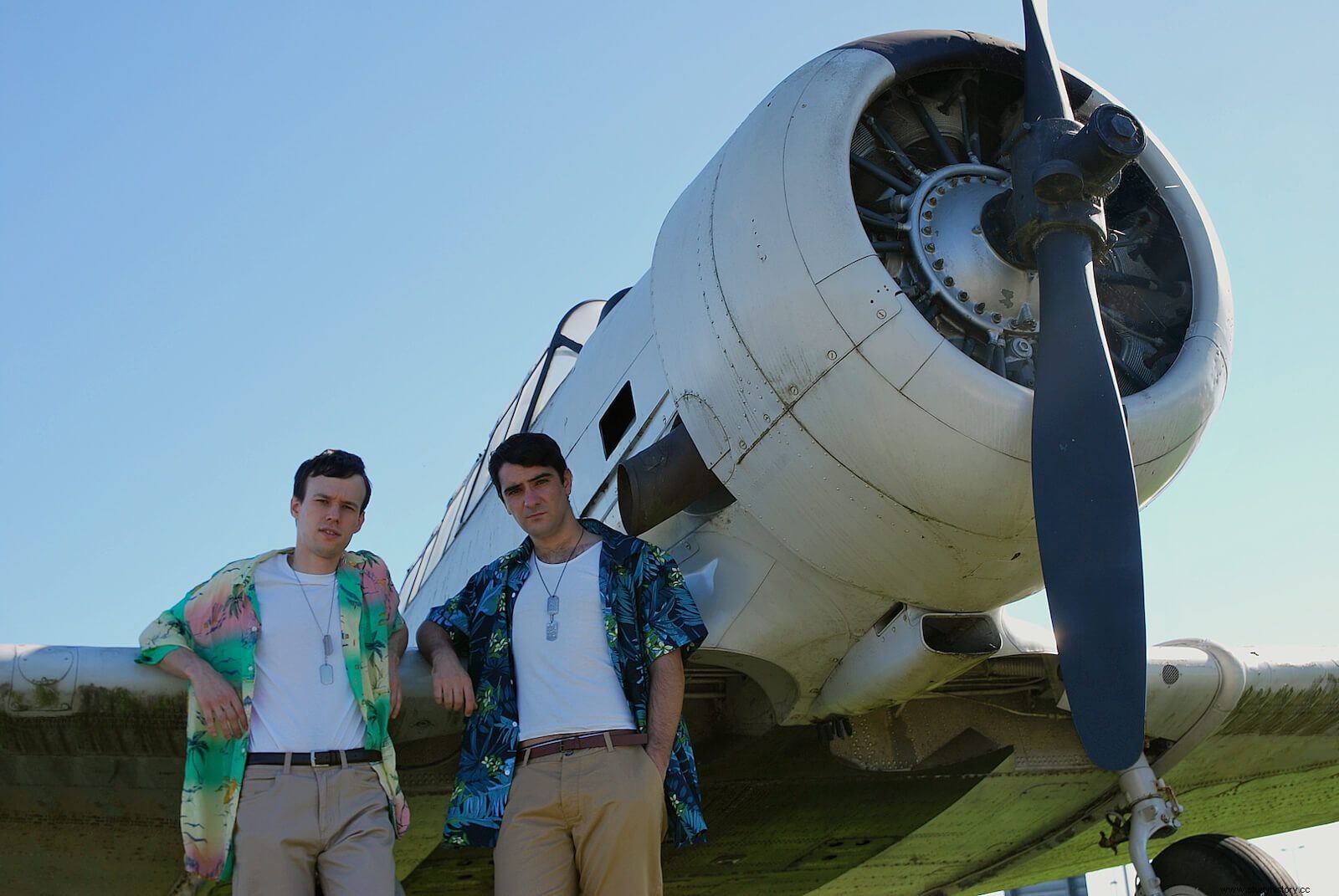
“From here to eternity” and its Hawaiians. Pearl Harbor in the movies, from Montgomery Clift to Ben Affleck
We write these lines while listening again to the Reenlistment blues in the voice of the country singer Merle Travis, who had a small role in Fred Zinnemann's ensemble film From Here to Eternity (From here to Eternity , 1953). From the songs that The sons of the Pioneers performed for the so-called Chivalry Trilogy Ford's no other had better reflected in the cinema the desires of a soldier – quartered at the Schofield military base (Honolulu) in the days before the attack on December 7, 1941 –, showing the sadness of being uprooted by the hand of blues of those who made the army their family. It was shot in a b/w that not only accentuated its drama, but deprived us of the color of the exuberant island of Oahu and of being able to appreciate the wonderful Hawaiian shirts of its protagonists and it was based on the successful homonymous novel by James Jones, a best seller which would be the first book in a trilogy with autobiographical overtones, since its author had been stationed in Hawaii in 1941. It won eight Academy Awards and has stood the test of time wonderfully, being frequently revived on television. The strength of its characters constantly stresses the development of the plot to the point of leading them to a fatalism that is not always independent of their will, although it may seem so, especially when the attack on the Pearl Harbor naval base is unleashed, which precipitates everything. The great talent of its actors allows us to perceive the nuances of a script in which, although the daring and freshness of the novel was considerably lowered, there are still underlying aspects, such as homosexuality, which could not be discussed at the time. The film is about the friendship between rebels Prewitt (Montgomery Clift) and Maggio (Frank Sinatra), from the master sergeant Warden who never wanted to be an officer (Burt Lancaster), the attractiveness of the captain's wife, Karen, who evoked the desires of the soldiers (Deborah Kerr) and the prostitute Lorena, who fulfilled them and who can't help falling in love with Prewitt ( Donna Reed) (2).
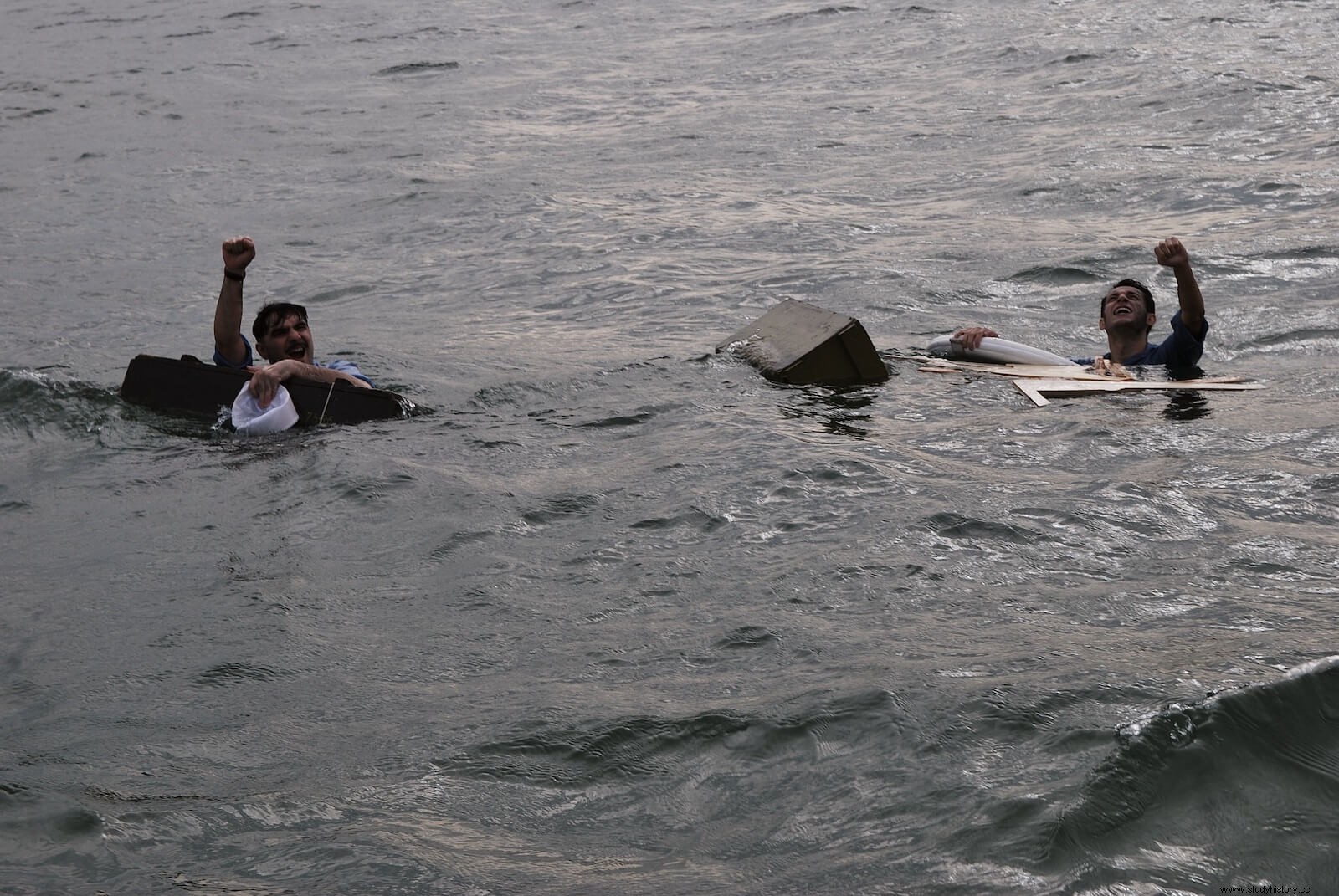
As reenactors we were especially interested in their shirts Hawaiian , a garment that has precisely arrived in this country through the cinema. It was born in the 20s and 30s of the last century, according to the Smithsonian magazine, at a time when the North American middle class appropriated certain symbols of Hawaiian culture, such as music, making the ukulele popular, and represented a certain idealization of the paradise that would come in handy in times of the Great Depression. As for its origin, everything indicates that it was the Japanese women of the islands who made those shirts with the fabric of the kimonos, which men liked so much from then on. If to recreate Hawaiian women we are inspired by films like From here to eternity or Blue Hawaii (Norman Taurog, 1961, starring Elvis Presley), it was Michael Bay's 2001 film of the same name with Ben Affleck and Josh Hartnett in their leading roles that took us all the way to Pearl Harbor. It was the opportunity to reinterpret the Texan plane at the Seve Ballesteros airport roundabout in Santander and we thought that with a bit of editing (you judge the result) we could use some of its most iconic and recognizable images to recreate a scene from the Santander aerodrome Hickam moments before the Japanese attack, where both actors (fighter pilots Rafe McCawle and Daniel Walker) appeared precisely with Hawaiians. The film built its plot around the friendship of its protagonists and the exaggerated and unbelievable –due to syrupy and sentimental– love story of both with the nurse Evelyn Johnson (Kate Beckinsale), who was also assigned to Pearl Harbor. It is a sort of revision of the 1970 film Tora! Torah! Torah! –which was practically a documentary– with all the artifice that the cinema of our times is capable of offering us a great visual spectacle that seeks the complicity of the viewer and has not quite achieved it, despite all the efforts of Disney, which did not spare in expenses to promote it, including a grand premiere at the Hawaiian Islands' own naval air base. The critics were merciless with her.

The Arizona tragedy
As on other occasions in which we had made a virtue of necessity, the expectations generated after recreating the two Hickam pilots encouraged us to go one step further with another proposal that Although it was not without risks, it showed us the potential that the choice of setting –and, above all, that of the object of homage– could bring to the field of memory, reaching our images to thousands of people around the world. in the prestigious historical recreation forum @ww2gear. It was the USS Arizona, the battleship that was sunk by Japanese naval aviation dragging 1,170 men out of the 1,512 that made up the crew to their deaths and was converted into a national monument that currently receives an average of 4,000 daily visitors (3). The common thread would again be the film by Michael Bay and to recreate it we chose the scene in which the sailors who are in the water observe how the two Curtiss P-40 fighters manned by McCawley and Walker fly over their heads, which we we interpret freely by developing a complementary scenery:one of them is at the limit and has to be helped by his partner, who pulls him until he is rescued by one of the many boats enlisted to pull the survivors out of the water. The lifesaver float is inspired by an original one that was auctioned in 2018 and purchased by the International Museum of World War II in Natick, Massachusetts. Despite the modest means, our proposal had a great impact and we believe that nothing similar had been proposed in historical recreation.

Layover in Hawaii
Hollywood cinema is full of films dedicated to the US Navy in World War II. Among the most remembered titles They were not essential (They were expendable , 1945), The Caine Mutiny (The Caine Mutiny , 1954), Stop in Hawaii (Mr Roberts , 1955) and other films about the Pacific campaign, which consumed unimaginable resources on that immense stage. The third and last scenery that we show you is about two sailors aboard a warship with a stopover in Pearl Harbor, trying to emulate the spirit of the famous comedy by John Ford that gives title to this entry and that previously triumphed in the theaters of Broadway with Henry Fonda in the title role (Lieutenant Douglas A. Roberts), who was seconded in his film version by James Cagney (Captain Morton) and Jack Lemmon (Ensign Frank Thurlowe Pulver), two actors in a state of grace. For this, we go to the Cantabrian town of Limpias, which exhibits in the open air some heritage elements related to the Second World War or later modernized with their corresponding modifications, such as the tower of the destroyer Gravina (launched as USS Furse at the end of the WWII and belonging to the Gearing class), an Orinque mine, a direction of fire and a Bofors anti-aircraft gun in simple mounting. The latter had to be digitally edited in order to adapt it to the scenery and show two gunners waiting for the arrival of some dreaded kamikaze, which would take us to the end of the Pacific campaign. Precisely the period in which the plot of Escala en Hawaii takes place. .

In these images that we show you here we have tried to combine historical recreation, cinema and memory with Pearl Harbor as a common thread, making the most of the means available to us to reach an audience that loves the seventh art. The cinema, the historical documentary and the recreation have in common the spectator, the public. The interaction (or the lack of it) between the resulting product and the public is key to understanding its deferred reaction (cinema and documentary), while the relationship between the spectator and the final result is much more active and direct in the recreation historical (which is close to the theater in its performances or sets, which are never identical due to the actor's own improvisation), but it is ephemeral and is only "immortalized" by using the photographic or video camera, thus bringing us closer to the documentary and the cinema with the interpretation of a fictionalized historical fact, which can also be used as re-enactors for these purposes. Thanks to Eder Artal, Iñaki Peña Eguskiza and Eneko Tabernilla for the composition of the characters, to Rogelio Piedra for his essential help, either as skipper of the boat or supporting this production in any other way, while a server was in charge of the planning of the sets and the coordination of all this recreative effort that we sincerely hope that it has been to your liking.
Notes
- Quoted in Félix Murcia. (2000). The Scenery in the Cinema. The Art of Appearance. Madrid:Author Foundation.
- It would have a remake in the 1979 miniseries of the same name, of which we will highlight the Golden Globe for best television actress that Natalie Wood won in 1980.
- USS Arizona Memorial
Image gallery
Click on the photo to enlarge. ©

